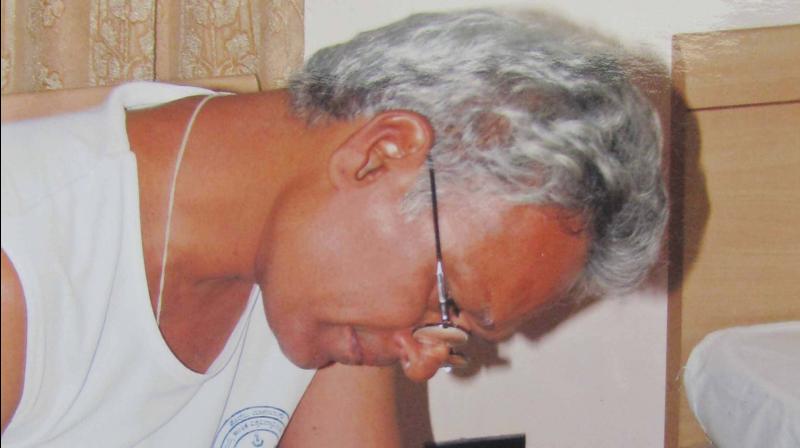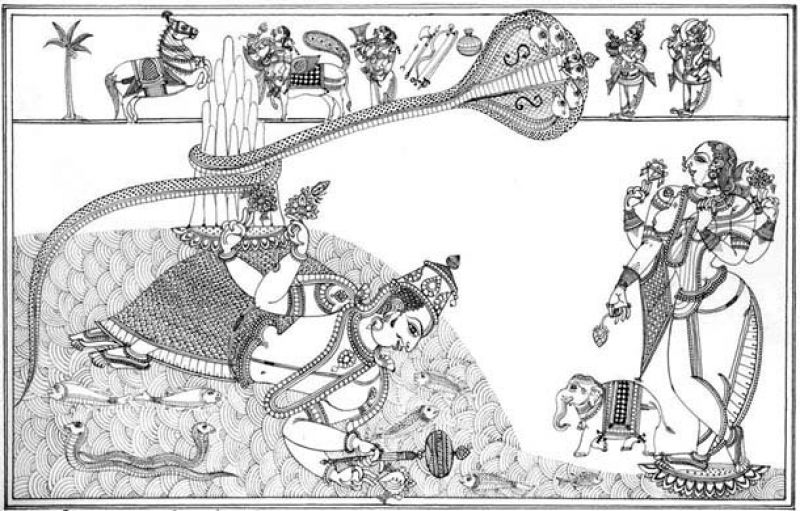The miniature artist and the art of the matter

In a soulless world where crass commercialisation has killed the creative instincts, does a brilliant artiste stand a chance? The sad plight of Vijay Hagaragundagi, renowned painter, whose works adorn many a beautiful mansion, museum and collection across the globe, is a poignant indicator of the hard times artists face today with the mad rush for wealth crushing everything else in its path.
There was an age when artistes, painters and singers were revered, decorated and pampered by those in power, who knew how valuable they were in keeping the intellectual and spiritual treasures of society alive and vibrant.
Not anymore. As Vijay himself confesses, “I’m disappointed with the government, politicians, society. Is there any possibility of the situation improving or is it going to deteriorate further? I have no means of subsistence. I’m 60 and eligible for pension which would be the only source of income for me. But I cannot run from office to office with an application…,” he says with pain in his eyes.
An exponent of the famous Vijayanagar school of painting, popularly known as Surapura miniature painting, Vijay is also known for his distinguished collection of antique bronze icons and pooja artefacts of the region.
He had participated in ‘Art in Action’, which is held annually in London, for four years, has held several solo exhibitions of paintings in Delhi, Baroda, Mumbai, and other places. His paintings are sought after by every art connoisseur.
But unfortunately, the artist who created them is literally on the streets, penniless.
“The government and some prominent politicians want me to form a trust and part with my paintings and antique collections. How can I do it? Where is the guarantee that they will be preserved well? Tomorrow they may land up in the hands of unscrupulous elements and may be lost forever. I would rather die with them,” Vijay says with deep anguish.
Without a place to live or preserve and exhibit his works, which are huge enough to be accommodated in a two-storey building, Vijay has dumped them in his relatives’ houses.
Hailing from a family of farmers at Hagaragundagi village, about 20 km from Kalaburagi, he was attracted to art as a teenager. The monochromatic illustrations in his school textbooks attracted young Vijay more than the text itself.
He bid goodbye to education after class 12 and headed to the Ideal Fine Arts Society in Kalaburagi where he studied art for six years. A scholarship from the Karnataka Lalitakala Academy gave him the opportunity to go to Shantiniketan to study modern trends in art.
However, disappointed with the ‘aesthetics, philosophy and politics’ of modern art, Vijay left Shantinikethan and devoted his attention to Surpura paintings. Subsequently, he went to Jaipur to learn the nuances of miniature painting under the stewardship of Sri Dwarakaprasad Sharma, a master of this art. Using the techniques he learnt, Vijay started copying the fragmented and damaged Surpura paintings.
Surpura ruled by a dynasty of local chieftains for six generations before it was absorbed into the dominion of the erstwhile Hyderabad state. Besides the royals of the principality, local mutts and businessmen commissioned religious paintings and portraits that led to the evolution of this school from the Vijaynagar School of Painting.
Surpura paintings are known for their use of bright colours to bring out vivid images of gods, goddesses, demons and folk heroes. After the annexation of Surpur principality the artistes took to other avocations due to lack of royal patronage.
It was only after art critic Jagadish Mittal documented Surpura paintings in the Sixties that the outside world started discovering this school of painting anew. Vijay, who took Surpura paintings to international arena, innovated on it by making it more acceptable to art critics.
But now, the artist, whose miniatures can be described as a poetic expression with flowing lines, colours and delicate gesso, is in dire straits. Will art lovers and maybe those in power, give Vijay his due for rejuvenating a style of painting which would otherwise, have disappeared forever? Or will he pass like many others, heart-broken and devastated cursing his fate? Only time will tell.
‘Lost many valuable collections’
Vijay lost many valuable collections when he was forcibly removed from the government quarters in September 2011, which he was using as an art gallery and museum for five years.
Considering his contributions, the Hyderabad-Karnataka Development Board permitted him to reside there in 2006. In 2009, when the authorities tried to remove him, he challenged them in court. The officials succeeded in obtaining an order to get him vacated in September 2011.
“I had not asked the government for a house. I was living in a tanda. Some officials asked me to stay in the guesthouse. They carried away loads of antique material and till today, they have not been returned to me. I have lost all hope in the system,” a dejected Vijay said.
An antique icon collector
Another passion of Vijay is collecting antique bronze icons and puja artefacts. His mother Ratnamma did not discard old brass utensils and Vijay took to her passion.
His collection has grown today to include Surpura miniatures, glass paintings, Udharani painting scrolls, rare Edramy paintings, Mysore and Tanjore paintings, Bhuta figurines in wood and metal, innumerable bronze mukha lingas and equestrian bronzes of folk hero Mailaralinga.
When friends who possessed these bronze idols, did not part with them for his collection, he headed to Delhi to learn the lost wax process of bronze casting from Purshparaj Betala.


